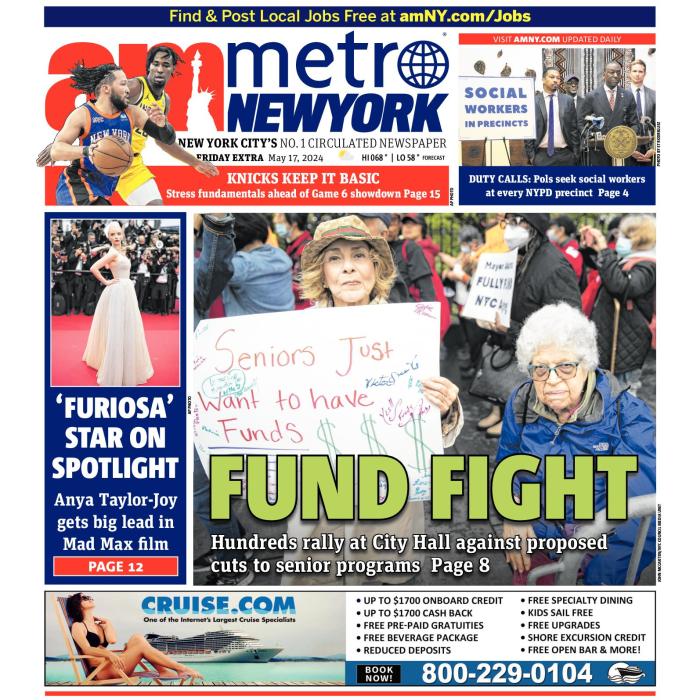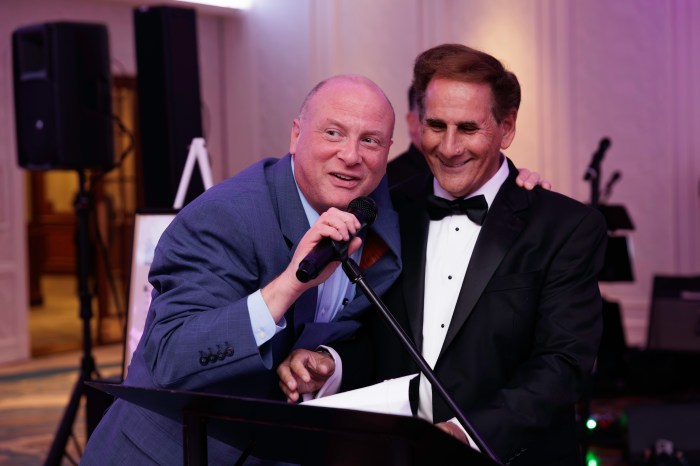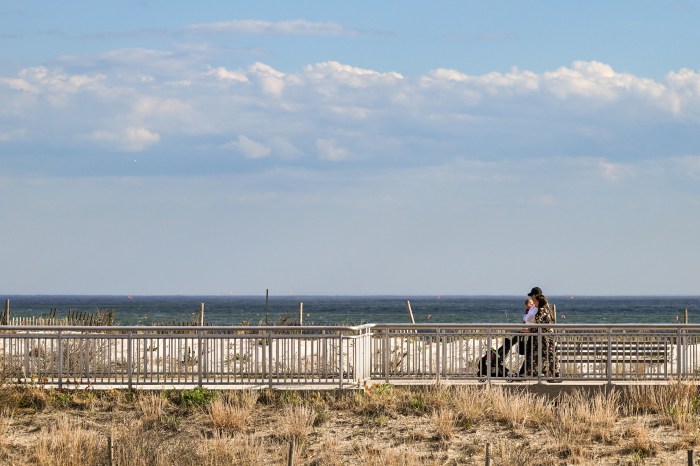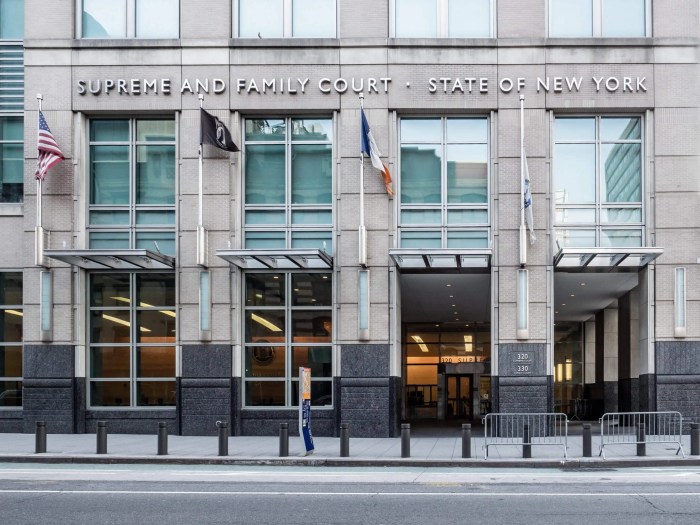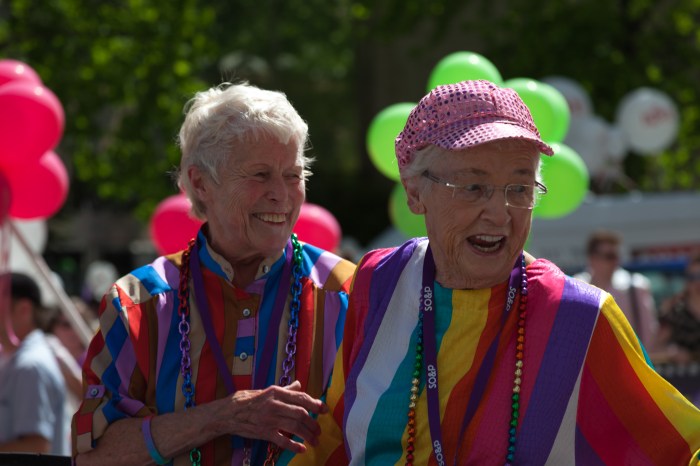Kramer’s ‘conflict’ exposed
To The Editor:
Re “U.S.C.C. unravels” (letter, by Susan Kramer, April 30):
This is a response by the Union Square Community Coalition to Susan Kramer’s letter, and a reassurance to your readers that U.S.C.C. has not unravelled, Kramer’s opinion notwithstanding. U.S.C.C. has simply resumed its longtime — since 1980 — historic role as a community advocacy organization.
Years ago, Susan Kramer and her co-chairperson resigned from U.S.C.C. when they were outvoted on the issue of having a restaurant in the historic children’s pavilion in Union Square Park. The membership as well as a majority of the board were overwhelmingly in favor of new and larger playground space in the park and did not want the construction packaged with a restaurant, as specified in a letter from the Parks Department commissioner to Kramer. Had Kramer not resigned, she was about to be removed by the board for not revealing a conflict of interest: simultaneously heading U.S.C.C. and being appointed to the eight-person Residents Advisory Council of the Union Square Partnership business improvement district, an affiliation to which Kramer makes no reference in her letters nor in present-day interviews.
It was the board’s feeling that this hidden affiliation explained why U.S.C.C. board votes and members’ wishes were ignored consistently in favor of what the BID was promoting. Her BID relationship has gone even further: Instead of praising the enormous gains in recapturing additional play space gained by the current board with the help of other community organizations and the support of elected officials since her departure, Kramer continues to be the official attack spokesperson for the Union Square Partnership BID. The BID’s P.R. representative continues to offer her to the press as a supporter of their plan; the press, however, may not be aware of her past relationship to the BID and the perception of double-dealing that resulted.
U.S.C.C. has a wonderful track record of accomplishments, no matter how large the chip on the shoulder this critic brings to the discussion. Fortunately for the community, since her resignation, the current board has been instrumental in helping to get the proposed play space greatly increased and improved. The current lawsuit instituted by U.S.C.C. specifically asked that the playground construction continue, with the work to be stopped only on the pavilion and the destruction of the trees.
To us, the overarching issue at stake is why should public parkland be taken away from children and the community to build a restaurant when the community has so precious little space devoted to kids but the highest concentration of restaurants in the city? Clearly, this is a nonpark purpose when you consider the circumstances. What would the BID and Kramer say to an anonymous donor demanding that a shoe store or a liquor store be put in the children’s pavilion instead of a restaurant?
Additionally, why should this anonymous donor of $7 million and the unelected, unaccountable business improvement district be allowed to dictate what is to be done on public land in a public park?
It is rather unfortunate that Kramer, who failed to disclose an important conflict of interest while she was an officer of U.S.C.C., still cannot accept the opinions of the U.S.C.C. membership or board and that of the larger community! We hope going forward she’ll be more forthcoming about her past and present affiliations, for the sake of honest and transparent discussion.
Jack Taylor
Taylor is secretary, Union Square Community Coalition board of directors, and is writing on behalf of the board
Recalls curious comment
To The Editor:
Re “U.S.C.C. unravels” (letter, by Susan Kramer, April 30):
At the invitation of numerous board members from her own group, I attended many meetings of the Union Square Community Coalition. One in particular, I remember vividly. Apparently not understanding the concept of wanting to help others, Ms. Kramer said to me, “I don’t understand why you care; you don’t live in the neighborhood.” I remember my response as if it were yesterday: “So, according to that philosophy, I can only care about people suffering from cancer if they live in my neighborhood?” This sad interaction was unfortunately indicative of the attitude and behavior displayed by Ms. Kramer during this project.
It would also be helpful if she were familiar with the details of the project. The original Parks Department/BID plan provided for a 28 percent increase in play space, a plan she aggressively promoted. The largest amount of space was taken up by a large outdoor terrace for restaurant patrons. NYC Park Advocates, working with members of U.S.C.C. and elected officials and with the support of 57 area groups, fought and defeated this irresponsible plan. Through a public and transparent campaign, we were finally able to fully restore all of the play space lost to the seasonal restaurant, and more. As a result, the new playground being built is almost triple the size of the current two in that area of the park. The community is fighting to have the pavilion restored for the purposes for which it was built — as a shelter, a bandstand and a children’s play space.
The reality is, once Ms. Kramer was out of the picture, U.S.C.C. was finally able to represent the needs and the desires of the community on this important park issue. The result is something the city’s children and families will be able to benefit from forever.
Geoffrey Croft
Croft is president, NYC Park Advocates
U.S.C.C. for the people
To The Editor:
Re “U.S.C.C. unravels” (letter, by Susan Kramer, April 30):
It’s not surprising that Susan Kramer bitterly objects to U.S.C.C.’s opposition to a restaurant in Union Square Park’s pavilion. An unacceptable price would have been paid by the community and our children had she continued as U.S.C.C.’s chairperson. Kramer, seemingly, was advocating on the community’s behalf, but in fact was “working” for the Union Square Partnership/Parks Department’s restaurant plan for the pavilion. Inexplicably, she did not seem to care that she was not representing the wishes of her constituents when she repeatedly misrepresented U.S.C.C.’s position by publicly advocating for the restaurant plan. She now acts as an informal public spokesperson for their plan.
Early on, Ms. Kramer defended her compromised position by saying that all she wanted was a renovated playground for her children. The price paid to fulfill her wish, ironically, would have resulted in less than one-third of the playground area for all children. U.S.C.C. always wanted maximum play space, and its hard-fought efforts resulted in a revised plan that will almost triple the play space in that area of the park to 15,000 square feet.
U.S.C.C. has now put all its efforts into defeating the ill-conceived pavilion restaurant plan. After three decades of the pavilion’s deterioration and its being closed to the public, U.S.C.C. is fighting for its restoration and its return to the original purpose of the city’s park pavilions: to be used for community and children’s activities — as has been done successfully in Columbus Park. We fought to win desperately needed outdoor play space, and now we look forward to winning our litigation to recover the free use of the pavilion’s sheltered space for all children and the community.
Eadie Shanker
Shanker is coordinator, Save Union Square Campaign
For a small St. Vincent’s
To The Editor:
Born in the vanished and beautiful Seton Building of St. Vincent’s Hospital, then growing up living across the street, I volunteered there and was treated for emergency surgeries, which for the most part were good quality. But like all 11 Landmarks Preservation Commission members, I do not see the need for the vast and disruptive development that the hospital proposes.
Of course, a hospital can always claim to be providing important services, but it is also a business entity. Why not manage growth and keep small? A scaled-down community hospital can serve our needs and maintain our quality of like better than some monstrous facility that also includes an enormous condo; very clever to build in potential patients to a business development plan, but surely this makes a neighborhood already crowded with tourists even more crowded with new residents. And now the hospital is claiming “hardship”? Oh, please.
Let’s remain a village in scale and spirit. Let’s oppose institutional bullying from N.Y.U., from hospitals and from the city. At this time of looming recession, let’s stay small. Small is beautiful. And small is smart.
Paul Carroll
Courts on art vendors
To The Editor:
Re “Shlock as free speech” (letter, by Judy Seigel, April 30):
Judy Seigel expresses skepticism that the First Amendment protects the sale of artistic expression and wonders if the U.S. Supreme Court has ever ruled on this question. It has repeatedly.
From Virginia State Bd. of Pharmacy v. Virginia Citizens Consumer Council, 425 U.S. 748, 761 (1976): “Speech is protected even though it is a form that is sold for profit, and even though it may involve a solicitation to purchase or otherwise pay or contribute money.”
Bery/Lederman et al v. City of New York, 97 F.3d 689 (2d Cir. 1996), the ruling establishing street artists’ rights, states:
“Visual art is as wide ranging in its depiction of ideas and emotions as any book, treatise, pamphlet or other writing. Artwork is entitled to the same First Amendment protection as written material. Sale of such protected material is also protected by the First Amendment.”
Riley v. National Federation of Blind of North Carolina, 487 U.S. 781, 801 (1988), states: “It is well settled that a speaker’s rights are not lost merely because compensation is received; a speaker is no less a speaker because he or she is paid to speak.”
In United States v. National Treasury Employees Union, U.S., 115 S. Ct. 1003 (1995), the Supreme Court found that a ban on honoraria for government employees “imposes the kind of burden that abridges speech under the First Amendment,” in part, because “the denial of compensation for lower-paid, non-policymaking employees will inevitably diminish their expressive output” and will “impose a significant burden on the public’s right to read and hear what the employees would otherwise have written and said.
“As in the present case, without the money, the plaintiffs would not have engaged in the protected expressive activity. Furthermore, the street marketing is, in fact, part of the message of appellants’ art.
“As they note in their submissions to the court, they believe that art should be available to the public. Anyone, not just the wealthy, should be able to view it and to buy it. Artists are part of the ‘real’ world; they struggle to make a living and interact with their environments. The sale of art in public places conveys these messages.”
In a subsequent 2001 Second Circuit Federal appeals Court ruling, Lederman et al v Giuliani/Bach et al v City of NY 98 Civ. 2024 (LMM), the court applied this same protection and exemption from a license or permit to artists selling in parks.
As to whether some of the art sold on the street are “tchotchkes” or not, this is a purely subjective opinion that can vary depending on one’s views. That art can be sold under free expression is, however, a settled matter.
Robert Lederman
Lederman is president, A.R.T.I.S.T. (Artists’ Response To Illegal State Tactics)
Alan’s foie gras faux pas
To The Editor:
In response to several recent letters in your Community Media newspapers highlighting Council Speaker Christine Quinn’s “callous indifference” when it comes to animal issues, I concur. But I also want to shine the spotlight on her equally egregious betrayal of public trust. Quinn’s cozy relationship with folks in the cruel and well-heeled carriage horse industry and the control she wields over other councilmembers — such as Alan Gerson, who suddenly withdrew his support of a foie gras bill — reek of inside power plays that the public finds deplorable and distasteful.
Quinn’s refusal to let the Pets in Housing Bill come up for a vote is another indication of her inability to connect with issues important to the public. Add to that her claims of memory lapse and/or lack of awareness of the misuse of taxpayer money in “slush funds” that found their way to her favorite “charities” and we are, at the very least, looking at someone who has “lost it” or, at worst, someone guilty of even more reprehensible acts. The public has had enough! Move on, Ms. Quinn!
Zelda Penzel
Bike lane lament
To The Editor:
We used to have a quiet, even flow of two-lane traffic on Washington St. One day, thick white lines were drawn on the asphalt to accommodate a bike lane on the street’s east side and add 3 feet to the parking spaces’ width on the west side.
From my windows, I see the length of Washington St., and so far I have only seen two bikes using this lane. Its emptiness is a statement in itself. The bikes are probably one block west on the Hudson River Park bike path.
By the city’s eliminating a traffic lane, we now have a lot of traffic congestion and honking horns. Combine this with all the noisy smokers from the bars being forced into the streets. More examples of City Hall bureaucrats destroying the West Village’s quality of life.
Joan Kadushin
E-mail letters, not longer than 250 words in length, to news@thevillager.com or fax to 212-229-2790 or mail to The Villager, Letters to the Editor, 145 Sixth Ave., ground floor, NY, NY 10013. Please include phone number for confirmation purposes. The Villager reserves the right to edit letters for space, grammar, clarity and libel.
